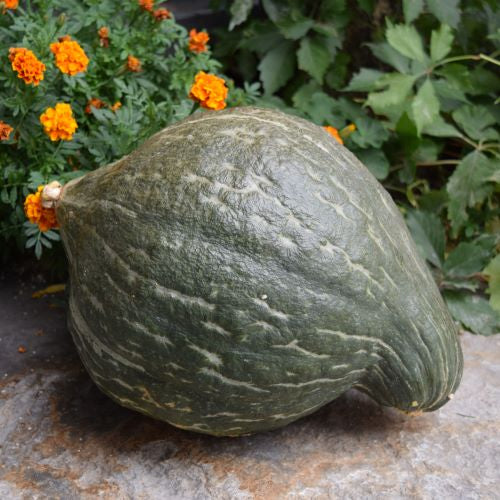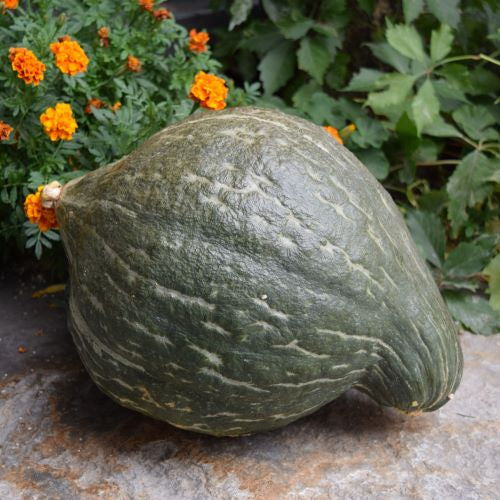Hubbard, True Green Improved - Winter Squash
Hubbard, True Green Improved - Winter Squash
Couldn't load pickup availability
Cucurbita maxima
Currently unavailable, we suggest Hubbard, Blue and Hubbard, Golden as alternatives.
105 days — One of the Hubbard-type squash variants, 'True Green Improved Hubbard' have twelve to fifteen foot long vines that bear ten to fifteen pound, dark green skinned, golden-fleshed fruit. Great for canning, freezing and is an excellent keeper.
James J. H. Gregory introduced the original 'Hubbard Squash' to the seed trade. Originally brought to New England from South America or the West Indies, the variety had been grown in Marblehead as early as the 1830s. A neighbor to the Gregory's, Elizabeth Hubbard (also known as "Marm Hubbard"), recognized the properties of the squash and brought them the seeds saying, "it was the best squash she had ever tasted in her life."

Here in the Maritime Northwest, it is common to plant seeds in hills. The hills are created by mounding up the soil about four to six inches high, twenty-four inches across at the base and flattened on the top. This allows the soil to be better warmed by the sun and provides better protection from heavy rain.
Sow five to six seeds, one inch deep, in hills or rows. Spacing is dependent on plant type. Vining varieties should be spaced on six foot centers while bush-types at twenty-four to thirty inches apart. When seeds germinate, cut off all but the strongest three or four seedlings.
When laying out your garden, remember to consider the growing habits of the varieties that you are planting. Some bush-types are compact while some vining types require a tremendous amount of space. Harvest time will also vary by type. Informational References:
- "Vegetables of New York: The Cucurbits," New York Agricultural Experiment Station, 1935, pgs. 24-25.
- "List of American Varieties of Vegetables for the Years 1901 and 1902," by W. W. Tracy, Jr., USDA, 1903.
Explore our vegetable collections:
[ Artichokes | Asparagus | Beans | Beets | Broccoli | Sorghums | Brussels Sprouts | Cabbage | Cantaloupe | Carrots | Cauliflower | Celery | Collard Greens | Corn | Cucumber | Eggplant | Endives | Gourds | Kale | Kohlrabi | Leeks | Lettuce | Mesclun Mix | Mustard Greens | Okra | Onions | Parsley | Edible Pod Peas | Garden Peas | South Peas | Hot Peppers | Mild Peppers | Pumpkins | Radishes | Rapini | Rhubarb | Salad Greens | Salsify | Summer Squash | Winter Squash | Swiss Chard | Tomatillo | Tomatoes | Dwarf Tomato Project | Turnips | Watermelons ]

